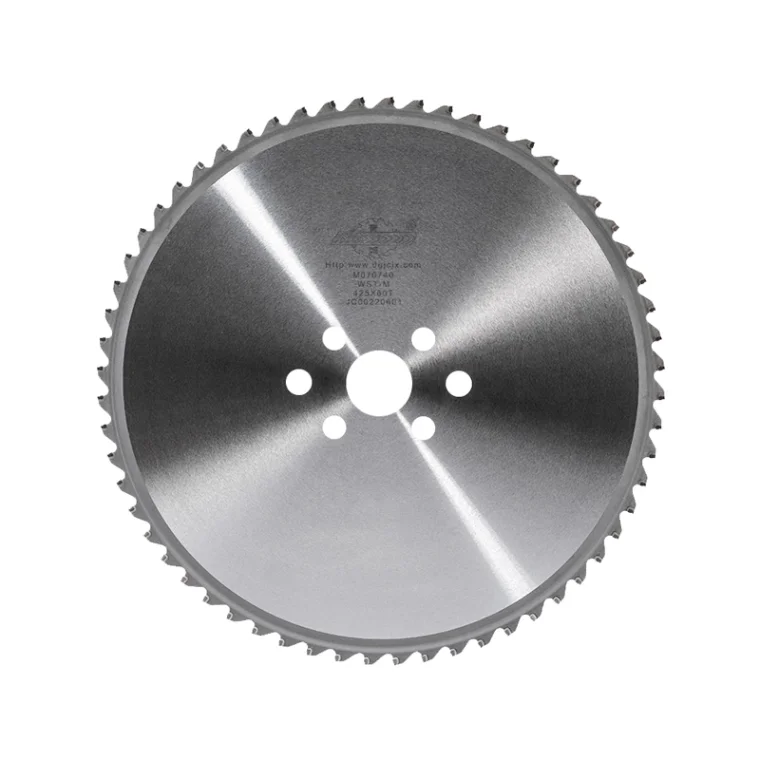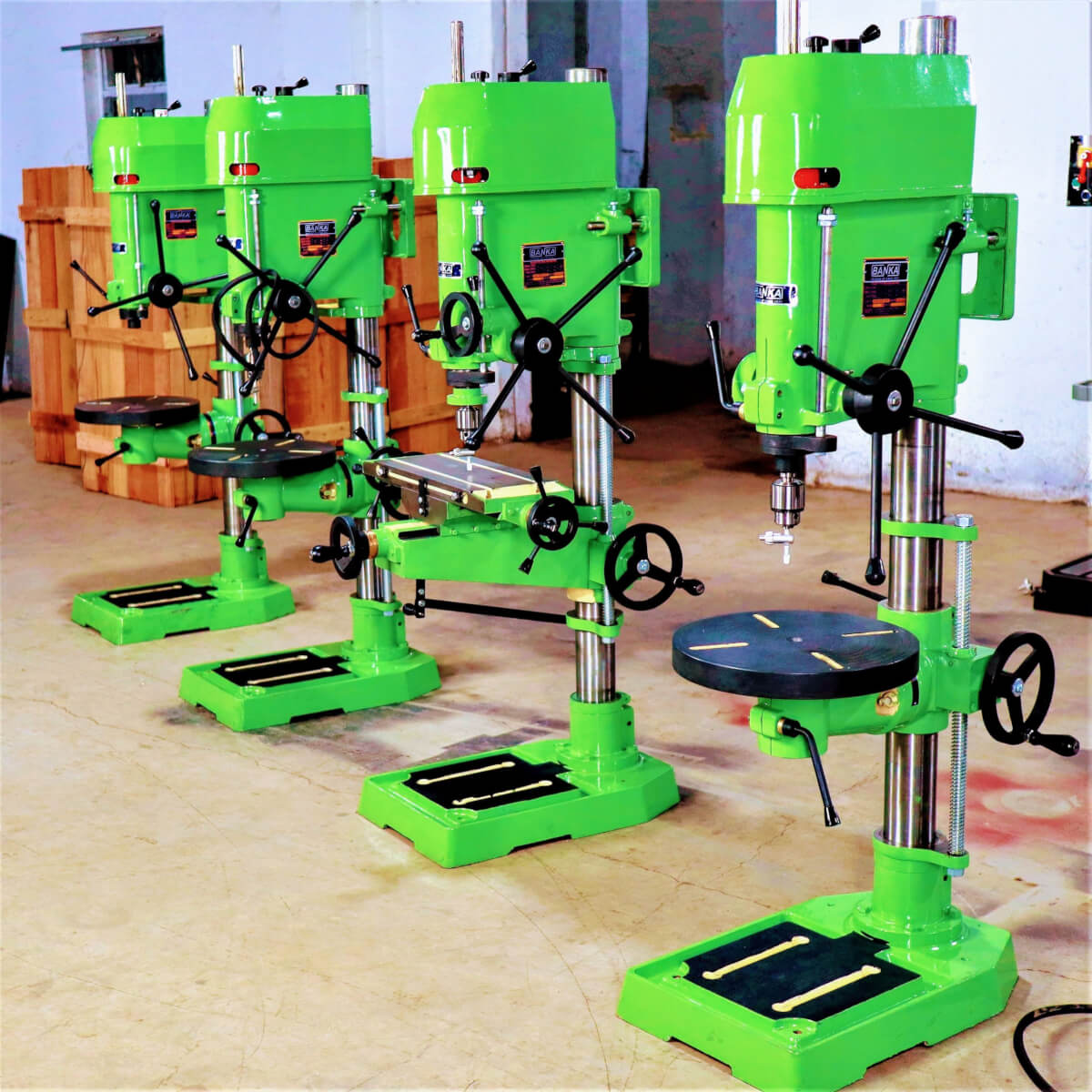Metal cutting circular saw blades are essential tools in industrial production and metalworking, widely used for cutting a variety of metals, including steel, aluminum, stainless steel, and copper. However, in practice, many users tend to overlook key details, resulting in reduced cutting efficiency, accelerated blade wear, and even safety hazards. This article will comprehensively analyze the key considerations when using metal cutting circular saw blades to help users improve cutting efficiency, extend tool life, and ensure operational safety.
1. Choosing the Right metal cutting circular saw blade
Choosing the right circular saw blade is the first step to ensuring effective cutting. Different metal materials, thicknesses, and shapes require different types of circular saw blades:
Material Matching
High-Speed Steel Circular Saw Blades: Suitable for cutting metals like mild steel and aluminum, they offer lower cost but limited wear resistance.
Tungsten Carbide Circular Saw Blades: Suitable for cutting stainless steel, copper, cast iron, and thick plate metal, they offer excellent wear resistance and a long life.
Tooth Shape and Number of Teeth
Coarse-Tooth Blades: Faster cutting speeds and suitable for cutting thick plate metal, but they produce a rougher cut surface.
Fine-tooth blades: Provide a smooth cutting surface and are suitable for thin plates and precision cutting, but they also have slower cutting speeds.
Diameter and Thickness
The diameter of a circular saw blade should be selected based on the cutting machine model and workpiece size. Too large or too small will affect cutting stability.
The thickness should be adjusted based on the hardness of the material and the cutting requirements. Too thin a thickness can easily cause bending, while too thick a thickness can increase the power load.

2. Pre-Operation Safety Checks
Before using a metal cutting circular saw blade, you must perform a safety check to ensure a smooth and safe cutting process:
Is the circular saw blade securely installed?
Check that the blade retaining nut is tightened to prevent loosening and accidents during cutting.
Inspect the circular saw blade for damage, including missing tooth tips and cracks or deformation. Any damaged circular saw blade can break during high-speed rotation.
Protective Measures
Wear protective glasses, gloves, protective shoes, and protective clothing.
Keep the work area free of flammable materials to avoid spark hazards.
Cutter Condition
Check that the cutter motor is functioning properly, the guide rails are flat, and the limit switches are working properly.
3. Cutting Techniques
Proper cutting techniques not only improve cutting efficiency but also extend the life of the circular saw blade:
Appropriate Feed Speed
Excessive feed speed can cause the saw blade to overheat, accelerating wear or causing burns.
Excessive feed speed reduces efficiency and may also cause burrs on the cut surface.
Cutting Angle Control
The circular saw blade should be maintained perpendicular to the workpiece or at a specified angle to avoid bending the blade or deforming the workpiece during bevel cuts.
Maintaining a Steady Cut
Maintain a steady hand during cutting to prevent the saw blade from shaking or shifting.
For large workpieces, use a clamp to ensure accurate cutting.
Using Cutting Fluid
When cutting high-hardness metals, use cutting fluid to reduce blade temperature, friction, and life.
Cutting Thick Metal in Sections
For thick plates or large workpieces, it is recommended to cut in sections to avoid excessive feed load at once.
4. Post-Cutting Care and Maintenance
After cutting, maintain your circular saw blade promptly to effectively extend its life:
Cleaning the Blade
Remove metal shavings and oil generated during the cutting process to prevent tooth dulling. Rust Prevention
Steel circular saw blades can be coated with rust-proof oil to prevent rust after prolonged storage.
Regular Inspection and Sharpening
Check the saw teeth for wear and sharpen or replace them if necessary.
Keep the saw blade balanced to avoid vibration during cutting.
Storage
Circular saw blades should be stored flat or suspended to avoid deformation caused by overlap or collision.
5. Common Problems and Solutions
The following common problems may occur during metal cutting:
Burrs on the Cutting Surface
Cause: Improper saw blade tooth shape, excessive feed speed, or excessive material hardness.
Solution: Select the appropriate tooth shape, adjust the cutting speed, and use cutting fluid if necessary.
Saw Blade Overheating
Cause: Excessive cutting speed, insufficient cutting fluid, or severe blade wear.
Solution: Reduce the feed speed, add cutting fluid, and regularly replace or sharpen the saw blade.
Saw Blade Vibration or Deflection
Cause: Insecure mounting, blade deformation, or unstable workpiece fixation.
Solution: Reinstall the saw blade, check for blade deformation, and secure the workpiece with a clamp. Short Saw Blade Life
Causes: High material hardness, improper cutting methods, and lack of maintenance.
Solution: Choose a high-hardness circular saw blade, control cutting parameters, and perform timely maintenance.
6. Safety Precautions
Metal cutting involves the risk of high-speed rotation and sparks. Strictly adhere to safety regulations:
Wear personal protective equipment: Safety glasses, gloves, protective shoes, and protective clothing are essential.
Keep the work area clean and tidy. Avoid debris that could obstruct the operation and prevent sparks from causing fires.
Avoid interruptions during cutting. Keep bystanders away and avoid distractions.
Stop and Check: If any abnormal noises, overheating, or blade vibration are detected, stop the machine immediately for inspection.
7. Summary
Circular saw blades for metal cutting play an important role in metalworking, but improper operation can lead to safety risks, reduced cut quality, and shortened blade life. Selecting the appropriate circular saw blade, proper operation, and timely maintenance are key to ensuring efficient and safe cutting. Users should pay attention to every detail during the cutting process, from blade material selection, tooth design, and feed speed control to cutting fluid application, workpiece securing, and safety precautions. Each step directly impacts the final result.
Through scientific and standardized operation, metal cutting circular saw blades not only achieve high-efficiency cutting but also extend their service life, providing stable and reliable support for industrial production.
Chine Chern specializes in selling a wide range of high-quality metal cutting circular saw blades, including high-speed steel (HSS) and carbide alloy (TCT). They are suitable for efficient cutting of various metals, including steel, stainless steel, aluminum, and copper. Whether for thick plate cutting, precision cutting, or industrial high-volume processing, Chine Chern's circular saw blades offer advantages such as wear resistance, smooth cutting, and long service life. Furthermore, the company provides professional technical support and cutting solution guidance to ensure that every customer can select the metal cutting circular saw blade that best suits their needs, achieving efficient, safe, and reliable cutting operations.
www.chinechernmachine.com
chinechernmachine

